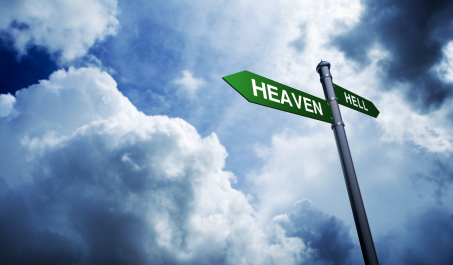
While Olam Haba is one of the very foundations of Jewish belief, what our classical sources say about it is not widely known. The more that we understand Olam Haba ourselves, the better we will be able to teach it to our students. This is Rabbi Resnick’s second and final essay addressing the topic.
The Medrash Rut (3:3) tells us:
In Olam Ha’zeh, whoever is crooked is able to become straight, and whoever is straight is able to become crooked, but in the future to come, whoever is crooked will not be able to become straight, and whoever is straight will not be able to become crooked, and anything lacking will not be able to be repaired.
Two reshayim (wicked people) may work together in this world, one of them may do teshuva before his death, and one of them may not do teshuva. The result will be that this one [who did do teshuva] will be among the group of tzadikim (righteous), while this one [who did not do teshuva) will be among the group of reshayim.
The [second] one will then see [the first one] and say — “Woe is to me! Perhaps there is favoritism (mashveh panim) with this one! He and I stole together and murdered together. [And yet,] he is among the group of tzadikim, while I am among the group of reshayim!”
They will answer him and say — “You are a fool! Three days after your death, your body was disgusting and covered with worms. Your friend understood this, and he returned from his path. While you may have thought about doing teshuva, you never [actually] did do it.”
He answers — “Leave me and I will go do teshuva [now].”
They will respond to this and say to him — “You fool! Don’t you know that Olam Haba (the world to come) is compared to Shabbat and Olam Ha’zeh (this world), which precedes it, is like erev Shabbat? If a person doesn’t prepare on erev Shabbat, then what will he eat on Shabbat? Furthermore, Olam Haba is compared to the ocean while Olam Ha’zeh, which precedes it, is like the shore. If a person doesn’t prepare [while he is still] on the shore, then what will he eat [when he is later] on the ocean? And finally, Olam Haba is compared to the wilderness while Olam Ha’zeh, which precedes it, is like where people live. If a person doesn’t prepare [while he is still] where people live, then what will he eat [when he is later] in the wilderness?”
He will say — “Leave me, and let me [at least] see my friend in his glory.”
They will respond and say to him — “Fool. We are commanded by G-d that reshayim should not stand by the tzadikim, and the tzadikim should not stand by the reshayim, and not the t’mei’im (impure) by the side of the tehorim (pure), and not the tehorim by the side of the t’mei’im.
The Yerushalmi (Peah 1:1) tells us that:
One with a majority of merits and a minority of transgressions will have his minority of light transgressions done in Olam Ha’zeh, so that he can be paid completely [for his majority of merits] in Olam Haba.
Please click here to continue reading…
_________________________________
Rabbi Asher Resnick serves as a senior lecturer at Aish HaTorah’s Executive Learning Center, and is a senior training lecturer for Aish’s Rabbinical Ordination program. As a close student of Rav Noach Weinberg, zt”l, he developed a special expertise in addressing fundamental issues in Judaism, as well as in bringing classical texts to life. As a bereaved parent, Rabbi Resnick’s extensive writings on loss, suffering and trauma provide a sensitive Jewish perspective on coping with these fundamental life cycle issues. OlamiResources.com is happy to highlight several essays over the coming months featured on his website JewishClarity.com. This essay should be l’zechut ul’iluy nishmat Ruchama Rivka, a”h, bat Asher Zevulun.



















